Several stories of interest have been happening in space exploration over the past month so let’s get to it!
Once again Space X is rewriting the rules on how to get into orbit cheaply and efficiently. Elon Musk’s Falcon 9 rocket has now been successfully launched more than fifty times with Space X recovering more than twenty of the first stages. For the last two years the Falcon 9 has flown more often than any other rocket making Space X the leader in the drive to commercialize space travel.
The latest Falcon 9 rockets have been considerably improved and updated from the first vehicle that was launched in 2010. Lighter, more powerful engines combined with larger fuel tanks have nearly doubled the Falcon 9’s payload to orbit.
Now Space X is rolling out a new version of the Falcon 9, referred to as Block 5 by Space X. The Block 5 version has been optimized for recovery and reuse. The intention is to reuse the Falcon 9 first stages at least ten times each in order to maximize the cost savings. The first launch of the new, improved Falcon 9 is scheduled for next week but since this is a new design there may be delays as Space X wants to be certain that everything is a go for launch. The image below shows the new, optimized Falcon 9 Block 5.
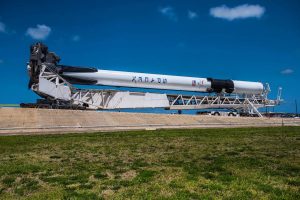
Perhaps the success of Space X is making their competitors a little nervous because just this past week Boeing saw fit to publicly remind everyone that their Space Launch System (SLS), which hasn’t flown yet, is bigger than Space X’s Falcon heavy, which has. I think that ‘my rocket is gonna be bigger than your rocket’ doesn’t quite match the success Space X has had recently. The image below shows what the SLS will look like when it is finally tested, hopefully next year.
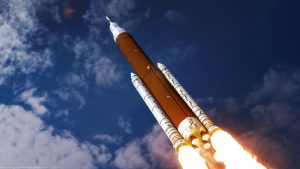
My second story is actually an update of a story I blogged about back on 27Jan2018. In that post I described the small nuclear power plant that was developed by NASA’s Glenn Research Center in Cleveland Ohio. Called the Kilopower Reactor Using Stirling Technology (KRUSTY) the prototype has been undergoing testing to the Department of Energy’s Nevada National Security Site. The image below shows the prototype KRUSTY.
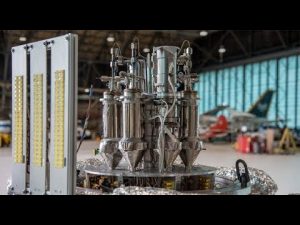
The first two tests to be carried out were simple environment checkouts without the reactor being powered up in any way. During the third test the reactor’s core was slowly powered up in order to heat the core. The final test consisted of a full power test of 28-hour duration intended to simulate an actual mission.
The prototype KRUSTY reactor is designed to output one kilowatt of electrical power but the concept is intended to be scalable up to ten kilowatts. NASA scientists are of the opinion that four such ten-kilowatt units would be sufficient to power a manned outpost on either the Moon or Mars. The image below shows what a KRUSTY unit could look like deployed on the Moon.
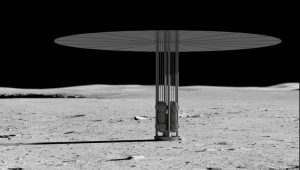
Over the last forty years NASA has initiated several programs for the design and testing of a small nuclear reactor for use in outer space. However all of those programs were canceled before testing had even begun primarily because of public aversion to nuclear power. Hopefully the day will soon come where KRUSTY is providing the electrical needs of NASA astronauts on another world.
My final story concerns a brand new NASA program for an initial design of the space telescope of the future. What scientists at Cornell are proposing is a modular concept of a telescope that will build itself piece by piece in orbit until it is about thirty meters across. The image below shows both a single module and a partially assembled telescope.
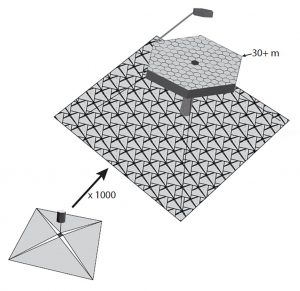
Professor of mechanical engineering Dmitry Savransky leads a team of fifteen scientists and engineers who have been awarded a Phase I NASA Innovative Advanced Concept grant of $125,000 for an initial feasibility study.
The basic idea is for the Telescope to be constructed from one thousand or more identical pieces that can be placed into orbit one at a time. Since the larger a telescope is the more light it can gather to study we want to put the largest possible into orbit but also the larger a telescope is the more difficult it is to get into space.
This certainly makes the idea of putting the telescope into orbit in pieces and assembling them there is a logical way to go. However the final configuration of the optics of any telescope has to be so precise that the concept of a prefabricated space telescope may simply be unworkable. Only time and study will tell if a modular space telescope is the way to go or not. This is a Phase I study after all.
